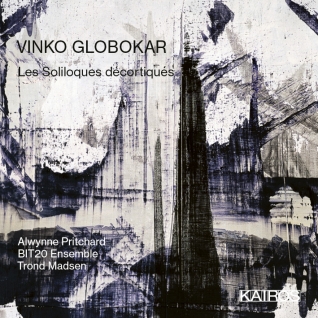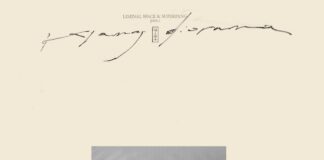Back in the mid-1960s, French-Slovenian composer and trombonist Vinko Globokar was one of a very few instrumentalists with the skills, imagination and commitment needed to realize the technically groundbreaking works then being composed for orchestral instruments. Proof of Globokar’s facility and openness to new ideas can be found in the fact that Berio’s Sequenza V for trombone, a demanding work embellished with an element of the theatrical, was composed for Globokar. It was also in the 1960s that Globokar became involved with free improvisation; at the end of the decade he helped found the free improvisation group New Phonic Art, a quartet that included multi-reedist Michel Portal, percussionist Jean-Pierre Drouet, and multi-instrumentalist Carlos Roqué Alsina. In his 1972 statement “Ils improvisent…improvisez…improvisons” Globokar asserted that improvisation not only could liberate the performer from undue external constraints, such as those imposed by a score, but could foster a deeper relationship between the instrumentalist and the instrument, as well as between performers involved in the collective work of group improvisation. Globokar’s interests in both technical virtuosity and improvisation have proven to be longstanding and are at work in Les soliloques décortiqués, a new collection of recent work on the Kairos label.
The album’s title track, a work for sixteen musicians dating from 2016, gives continuing evidence of Globokar’s concern for extending the limits and possibilities of instrumental performance in an improvised or quasi-improvised environment, and of structuring ensemble performances on the basis of individual performers’ awareness of intra-group interaction. As the title implies, the work was constructed around individual soloists, cast in the role of soliloquists. Globokar calls for each solo to constitute an “experiment” with performance techniques; in addition, each solo is to serve as a kind of model for the other players to respond to with their own contributions to the group sound. Here, imitation isn’t a form of flattery so much as an engine driving the composition’s thematic, textural and timbral development. Originally composed for Cologne’s Ensemble Musikfabrik, the piece is performed here by Norway’s BIT20 Ensemble, whose interpretation has the feel of an open, spontaneously coordinated improvisation in which the listener’s ear cannot help but focus on the richness of instrumental color combinations.
Like Les soliloques décortiqués, the other ensemble piece on the album, Kaleidoskop im Nebel for chamber group (2012-13), luxuriates in timbral possibilities. Like a kaleidoscope the piece unfolds as a series of dynamic color combinations forming, breaking up and reforming—sometimes gradually and sometimes abruptly. The BIT20 Ensemble realizes the piece with vigor and an attention to the subtleties of ever-shifting intra-group sonic alliances.
The middle piece on the album is Soprano Tapaguese sur Ache de Noë, a 2015 composition for “percussive soprano.” The piece, originally titled Metamorphosis, was written for Alwynne Pritchard, who realizes it here. Pritchard gives a bravura performance, vocalizing shouts and growls; whistling; and singing, all while manipulating a different percussion instrument with each limb.
_________________________________ITALIANO________________________________
A metà degli anni Sessanta, il compositore e trombonista franco-sloveno Vinko Globokar era uno dei pochissimi strumentisti con le capacità, l’immaginazione e l’impegno necessario per realizzare le opere tecnicamente innovative che allora venivano composte per strumenti orchestrali. Prova della facilità e dell’apertura alle nuove idee di Globokar fu il fatto che per Globokar venne composta la Sequenza V per trombone di Berio, un’opera impegnativa con un elemento teatrale. Sempre negli anni Sessanta, Globokar si è impegnato nell’improvvisazione libera e alla fine del decennio ha contribuito a fondare il gruppo di improvvisazione libera New Phonic Art, un quartetto che comprendeva il pluristrumentista a fiato Michel Portal, il percussionista Jean-Pierre Drouet e il polistrumentista Carlos Roqué Alsina. Nella sua manifesto del 1972 “Ils improvisent…improvisez…improvisons” Globokar affermava che l’improvvisazione non solo poteva liberare l’esecutore da costrizioni esterne, come quelle imposte da una partitura, ma poteva favorire un rapporto più profondo tra lo strumentista e lo strumento, così come tra gli esecutori coinvolti nel lavoro collettivo di improvvisazione di gruppo. Gli interessi di Globokar sia per il virtuosismo tecnico che per l’improvvisazione si sono dimostrati lungimiranti e sono al lavoro in Les soliloques décortiqués, una nuova raccolta di lavori recenti per l’etichetta Kairos.
Il brano che dà il titolo all’album, un lavoro per sedici musicisti che risale al 2016, testimonia la costante preoccupazione di Globokar di estendere i limiti e le possibilità dell’esecuzione strumentale in un ambiente improvvisato o quasi improvvisato, e di strutturare le esecuzioni in ensemble sulla base della consapevolezza dei singoli esecutori di reggere un’interazione intragruppo. Come suggerisce il titolo, il lavoro è stato costruito intorno a singoli solisti, un cast di musicisti impegnati nel soliloquio. Globokar chiede che ogni solo costituisca un “esperimento” con le tecniche di esecuzione; inoltre, ogni solo deve servire come una sorta di modello per gli altri musicisti, a cui rispondere con il proprio contributo al suono del gruppo. In questo caso, l’imitazione non è tanto una forma di adulazione quanto un motore che guida lo sviluppo tematico, testuale e timbrico della composizione. Originariamente composto per l’Ensemble Musikfabrik di Colonia, il pezzo è qui eseguito dal norvegese BIT20 Ensemble, la cui interpretazione ha il sapore di un’improvvisazione aperta, spontaneamente coordinata, in cui l’orecchio dell’ascoltatore non può fare a meno di concentrarsi sulla ricchezza delle combinazioni di colori strumentali.
Come Les soliloques décortiqués, l’altro pezzo d’insieme dell’album, Kaleidoskop im Nebel per gruppo da camera (2012-13), lussureggia di possibilità timbriche. Come un caleidoscopio, il pezzo si sviluppa come una serie di combinazioni di colori dinamici che si formano, si scompongono e si riformano, a volte gradualmente e a volte bruscamente. Il BIT20 Ensemble realizza il pezzo con vigore e attenzione alle sottigliezze delle sempre mutevoli alleanze soniche intragruppo.
Il pezzo nel mezzo dell’album è Soprano Tapaguese sur Ache de Noë, una composizione del 2015 per “soprano percussivo”. Il pezzo, originariamente intitolato Metamorfosi, è stato scritto per Alwynne Pritchard, che lo realizza qui. Pritchard gestisce una performance di bravura, vocalizzando grida e ringhia, fischiando e cantando, il tutto mentre manipola uno strumento a percussione diverso con ciascun arto.







